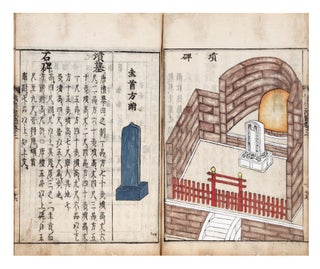One of the Earliest and Most Handsome Records of Classical Roman Architecture
Libro d’Antonio Labacco appartenente a l’Architettura nel qual si figurano alcune notabili Antiquita di Roma.
Title within finely engraved & elaborate architectural border and 27 engraved plates (four double-page or folding). Collation as in Mortimer: “four preliminary leaves, one additional leaf of printed text (leaf [32]), & 27 engraved plates on leaves 5-31, 33-36.” Large folio, cont. speckled calf (joints a little cracked but strong), double gilt fillet round sides, spine gilt, red morocco lettering piece on spine. From the second leaf: “Roma, In Casa Nostra,” 1559.
Fifth edition (1st ed.: 1552) of this important work in the study of classical architecture and one of the earliest architectural treatises illustrated with copper plates, in place of woodcuts and printed text. The author found the medium of copper engraving far superior to the traditional woodcut image, allowing for greater precision and realism.
Labacco (1495-1567?), Italian architect and frequent collaborator with Antonio da Sangallo the Younger on projects such as St. Peter’s Basilica, privately published this work with the help of his son, Mario, who executed the exceptionally detailed engravings. The elder Labacco believed that, especially in discussions of theory, illustrations proved much more effective than endless pages of text.
The first edition was published in 1552 and the Labaccos continuously altered the plates for some years, creating a number of editions and issues, all with minimal differences. Our edition matches the copy described by Mortimer and has a 30-line preface (Fowler 166, variant d). Mortimer writes: “The numerous variants in copies, issues, and editions noted by Ashby and in the Fowler catalogue are due to the printing ‘in casa nostra,’ where Antonio and Mario could alter plates or make up copies as needed.”
This book presents beautiful and accurate recreations of ancient Roman monuments such as the Arch and Forum of Trajan, the Temple of Castor and Pollux, the Mausoleum of Hadrian (now known as the Castel Sant’Angelo), Trajan’s Harbor, and several unnamed temples, based on descriptions gleaned from classical texts and the inspection of their ruins. The largest plate (nos. 29-31) is a compound reconstruction of features of classical ports, where Labacco includes a design of his own, a circular church inspired by the Pantheon. Several plates are details of the monuments, highlighting their columns, decorative features, others feature floor plans and schematics. Labacco also provides precise measurements on many of the plates. The text leaf (no. 32), offers explanatory text for the preceding triple-panel folding plate of the port.
Any early edition in fine condition on the market is most unusual today.
Nice and crisp copy from the Macclesfield library with the North Library bookplate and the characteristic embossed stamp on first few leaves. Small clean tear at top of plate 11, barely touching the image. Several of the plates have waterstaining limited to the upper blank margins. A few minor stains to plates.
❧ Benezit, Dictionary of Artists, Vol. I, pp. 22-23 (for the son, Mario). Mortimer 245. For more information on the various editions and issues, refer to Thomas Ashby’s discussion in La Bibliofilia, 16 (1914), pp. 289-309.
Price: $15,000.00
Item ID: 6080

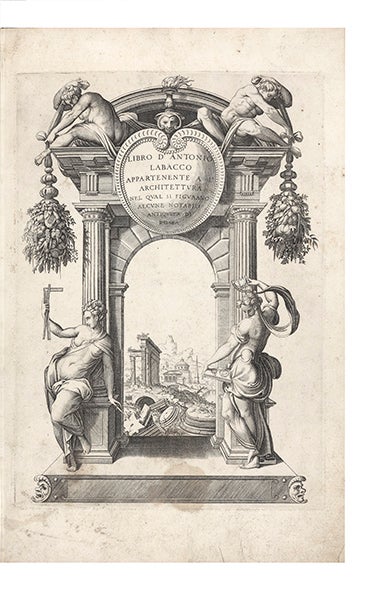
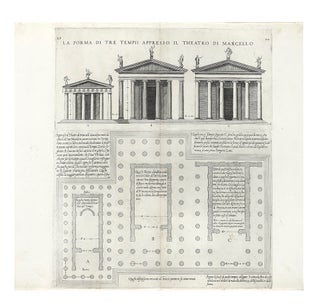
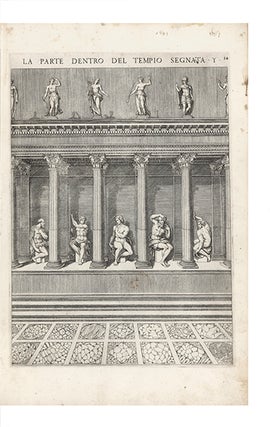
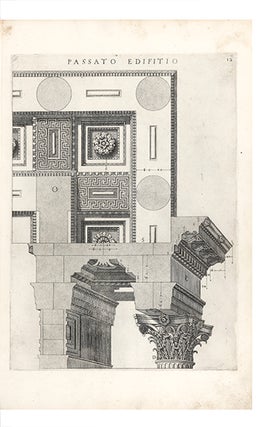
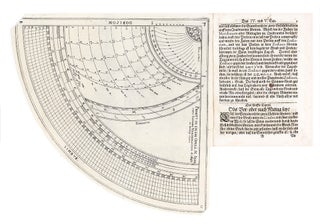
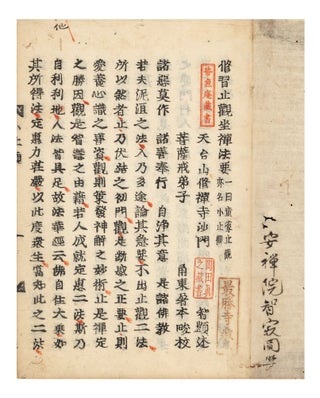
![Chŏngjae Cho Sŏnsaeng silgi [or] Jeongjae Jo seonsaeng silgi. Sŏg-u CHO, or Jo Seog-u.](https://jonathanahill.cdn.bibliopolis.com/pictures/9511.jpg?width=320&height=427&fit=bounds&auto=webp&v=1694202606)
